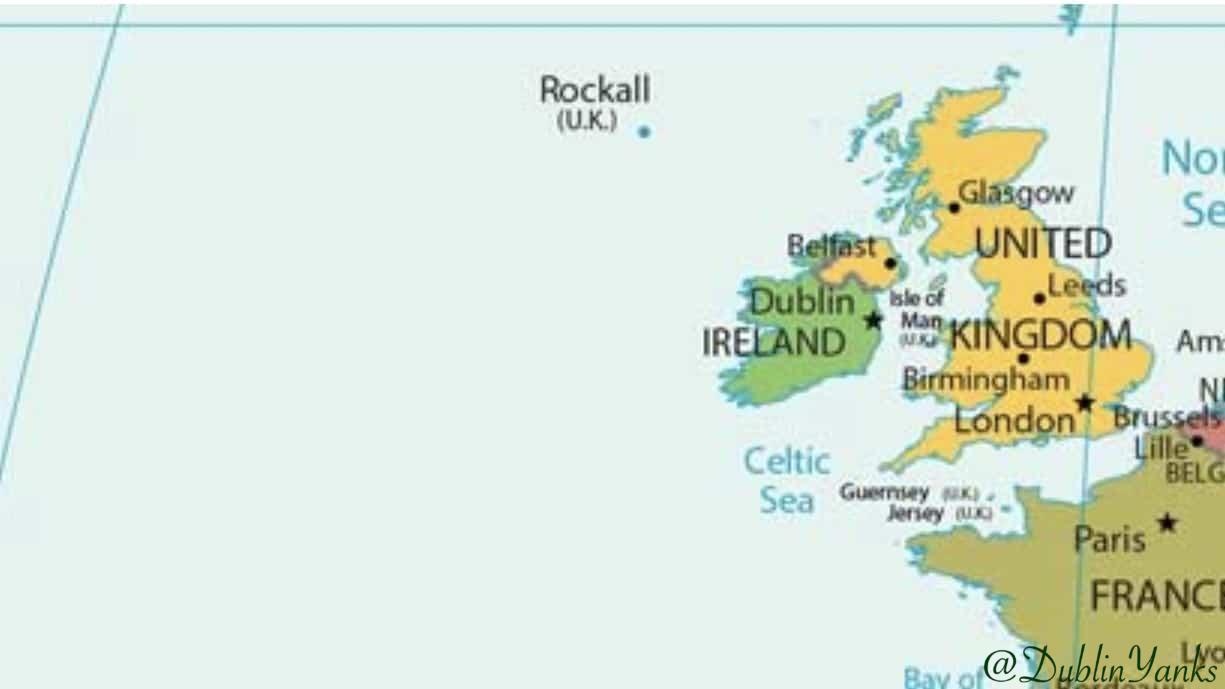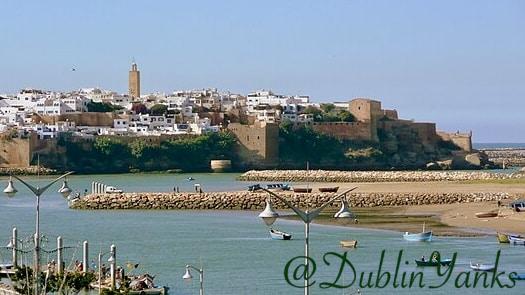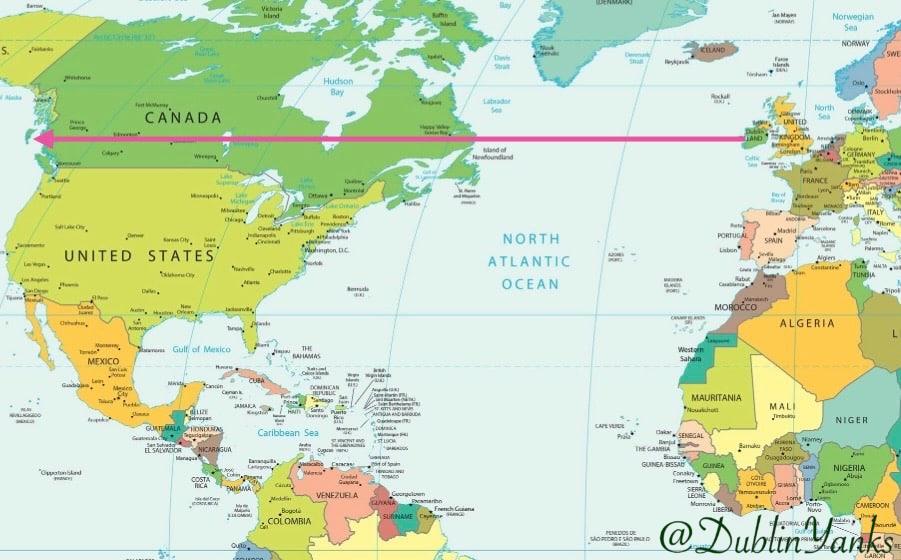Estimated reading time: 0 minutes
Picture Ireland—green hills, lively pubs, maybe a Guinness in hand. Now, guess what? Dublin, its buzzing capital, sits way farther north than you’d think. Therefore, let’s explore Dublin’s northern latitude, unpack its quirks, and see why it’s a must-visit spot for Americans visiting the Emerald Isle.

Where Exactly Is Dublin on the Map?
Dublin hugs the east coast along the River Liffey at 53.35° N latitude and -6.26° W longitude. That’s over 53 degrees north! For perspective, it outpaces Seattle and Montreal. As a result, this Ireland’s northern position blends coastal charm with a surprising twist. Curious? Knowing this spot sets up everything—climate, daylight, and more.
Cities Sharing Dublin’s Far-North Location
Dublin’s 53.35° N ties it to cool global neighbors. For instance, Liverpool, just 135 miles east, shares its mild vibe. Meanwhile, Hamburg, 600 miles away, echoes Dublin’s port energy. Across the pond, Edmonton, Canada, at 53.54° N, battles harsher winters. Then there’s Minsk, Belarus, 1,300 miles east, with a totally different feel. Subsequently, Dublin’s northern latitude connects it to a wild mix of places.
- Liverpool, England: About 135 miles east, this Beatles-famous city shares Dublin’s mild, maritime climate.
- Hamburg, Germany: A bit farther at around 600 miles east, Hamburg’s port city energy mirrors Dublin’s coastal vibe.
- Edmonton, Alberta, Canada: Roughly 3,700 miles west, this Canadian city sits at 53.54° N, though its inland location means harsher winters than Dublin’s.
- Minsk, Belarus: At 53.90° N, about 1,300 miles east, Minsk offers a stark contrast with its continental climate.
These latitude buddies show how Dublin’s position ties it to a mix of coastal and inland locales, all shaped by their northern perch.

A Vertical Trip Along Dublin’s Longitude
The -6.26° W line is slimmer but fun. Nearby, Dundalk sits 50 miles north, while Belfast, 100 miles up, blends Irish and British flair. Head south, and Seville, Spain, 1,100 miles away, basks in sun. In addition, Rabat, Morocco, 1,600 miles down, feels worlds apart. This thread shows Dublin’s far-north location in a diverse lineup.
- Dundalk, Ireland: Just 50 miles north, this smaller Irish town hugs the same longitude.
- Belfast, Northern Ireland: Around 100 miles north, Belfast sits close to -6° W, blending Irish and British influences.
- Seville, Spain: A whopping 1,100 miles south at -5.98° W, Seville’s sunny streets contrast Dublin’s cooler climes.
- Rabat, Morocco: Further south at 1,600 miles, Rabat’s North African coast is a world away from Ireland’s green shores.
This north-south thread highlights Dublin’s place in a diverse longitudinal family, from Celtic cousins to Mediterranean marvels.
How Far North Are U.S. Cities Compared?
Spoiler: Dublin leaves most U.S. cities in the dust. New York? 760 miles south. Chicago? 700 miles behind. Atlanta’s 1,100 miles down, and Dallas lags by 1,250 miles. Even Seattle, at 47.60° N, trails by 400 miles. Consequently, Dublin’s northern latitude gives it a unique rhythm—perfect for Yanks to explore via Pro Tips for Yanks.
- New York City (40.71° N): 760 miles south of Dublin.
- Chicago (41.88° N): 700 miles south.
- Atlanta (33.75° N): 1,100 miles south.
- Dallas (32.78° N): 1,250 miles south.
- Los Angeles (34.05° N): 1,600 miles south (plus a huge westward leap).
- Seattle (47.60° N): 400 miles south.
- San Francisco (37.77° N): 1,200 miles south.
Even Seattle, one of the northernmost big U.S. cities, lags behind Dublin by a good stretch. This northerly perch gives Dublin a unique seasonal rhythm compared to its American counterparts.

Seasonal Vibes: When to Visit Dublin
Ireland’s tourism dances with its Emerald Isle’s latitude. For this reason, here’s the scoop:
- January-February: Quiet months with fewer visitors. Cold, wet weather keeps crowds low, but indoor attractions like Dublin’s museums shine.
- March: St. Patrick’s Day (March 17) sparks a tourism spike, especially in Dublin, with parades and festivities drawing global travelers.
- April-May: Spring blooms bring moderate crowds. Milder weather makes it ideal for exploring the countryside.
- June-August: Peak season! Summer’s long days and (relatively) warm temps (averaging 60-68°F) pack Dublin and coastal spots with tourists.
- September-October: A shoulder season with fewer crowds, crisp air, and golden landscapes—perfect for a quieter visit.
- November-December: Tourism dips, but holiday markets and cozy pubs attract winter wanderers.
Summer’s king, but March and fall are gems. Check American Expat Life in Dublin for more insider tips!
Daylight Swings: Winter vs. Summer
Thanks to Dublin’s northern latitude, daylight varies wildly. In winter (December 21), you get 7.5 hours—sunrise at 8:30 AM, sunset by 4:00 PM. However, summer (June 21) stretches to 17 hours—sunrise at 5:00 AM, sunset past 10:00 PM. That 9.5-hour swing shapes everything here.
- Winter (December Solstice): Around December 21, Dublin gets just 7.5 hours of daylight, with sunrise near 8:30 AM and sunset by 4:00 PM. It’s a short, cozy day!
- Summer (June Solstice): Around June 21, daylight stretches to 17 hours, with sunrise at 5:00 AM and sunset past 10:00 PM. Perfect for late-night strolls.
That 9.5-hour swing is a hallmark of Dublin’s far-north position, shaping everything from daily life to tourism vibes.
Time Zone Twists: Dublin vs. U.S.
Dublin uses Irish Standard Time (IST), shifting to GMT+1 from late March to late October. Meanwhile, U.S. cities like New York jump earlier—mid-March to early November. So, in late March, the gap shrinks from 5 to 4 hours. Hence, plan calls with that in mind!
- New York/Chicago/Atlanta/Dallas (Eastern/Central Time): U.S. daylight savings runs from the second Sunday in March to the first Sunday in November. Dublin’s shift starts two weeks later and ends a week earlier, creating a brief time-gap quirk.
- Los Angeles/Seattle/San Francisco (Pacific Time): Same U.S. dates apply, but the 8-hour time difference (during standard time) shrinks to 7 hours during daylight savings overlap.
For example, in late March, New York is on EDT while Dublin’s still on GMT, making the gap 4 hours instead of 5. By late October, Dublin’s back to GMT while the U.S. lingers on daylight time. Plan your transatlantic calls accordingly!

Rainy Days in Dublin: What to Expect
Dublin’s maritime climate means rain, but not drenching. February’s driest at 2.0 inches; August tops out at 2.9 inches. Yearly? About 30 inches—less than Seattle’s 38. Thus, pack a light raincoat year-round. Moreover, for weather prep, visit Met Éireann — Ireland’s weather pros.
- January: 2.5 inches
- February: 2.0 inches (the driest month)
- March: 2.1 inches
- April: 2.2 inches
- May: 2.4 inches
- June: 2.6 inches
- July: 2.2 inches
- August: 2.9 inches (the wettest month)
- September: 2.3 inches
- October: 3.1 inches
- November: 2.8 inches
- December: 2.7 inches
Annual total? About 30 inches—less than Seattle’s 38 inches but spread evenly, so pack a light raincoat year-round.
Rod Stewart’s Rainy Dublin Moment
On May 24, 2024, Rod Stewart rocked a rain-soaked Kilmainham field. His love for Ireland’s history—like Grace Gifford’s tale—ties into Dublin’s far-north location. Rain didn’t stop him, and it shouldn’t stop you!
So, next time you’re sipping a pint in Dublin, remember: you’re way up north. Its long summer days and cozy winters make it special. In conclusion, for more, check Visit Dublin—the official guide. Here’s to decoding Ireland, one craic-filled adventure at a time!
Discover more from Dublin Yanks: American Travel Tips for Visiting Ireland
Subscribe to get the latest posts sent to your email.
